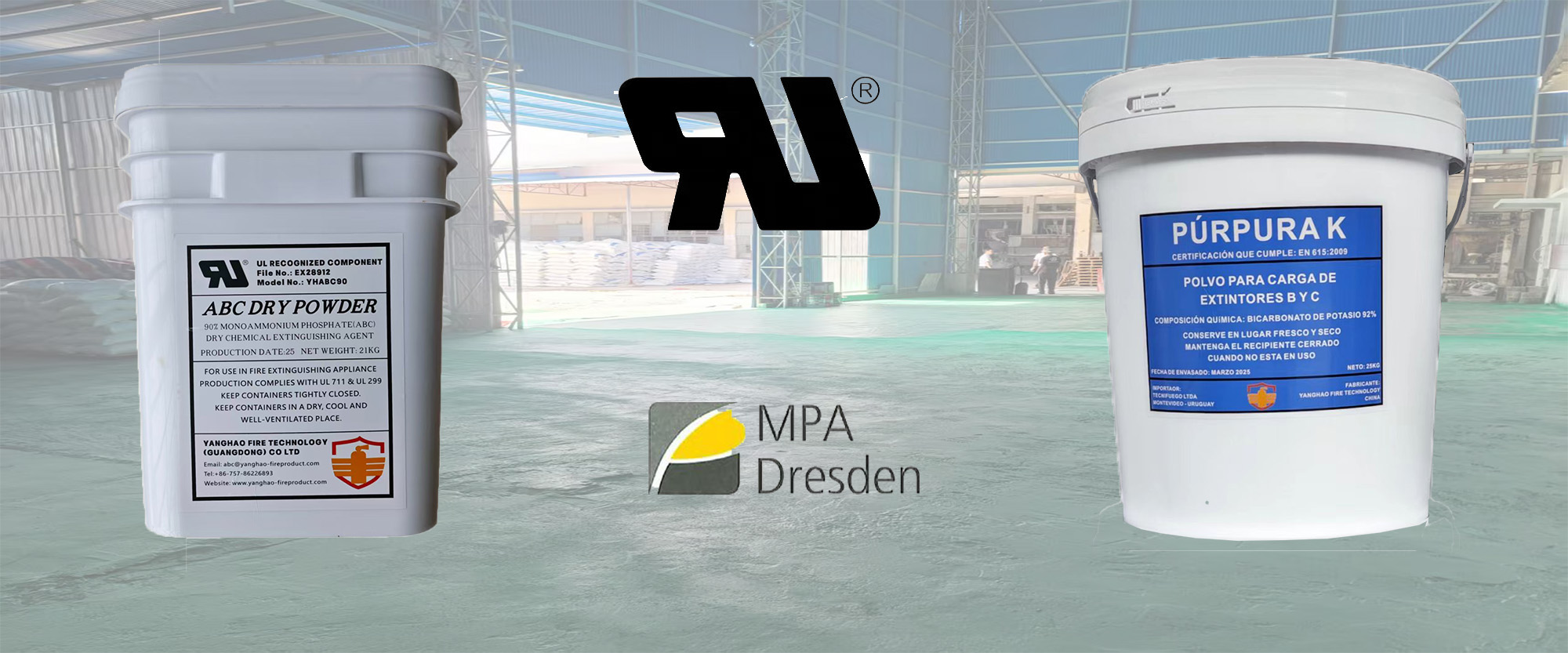Monoammonium Phosphate 50% vs 90%: How Content Affects Fire Suppression Efficiency
1. Introduction
In today’s global fire safety market, choosing the right dry chemical fire extinguishing agent is crucial—not just for regulatory compliance, but for saving lives and assets. One of the most commonly used ingredients in ABC powder extinguishing agents is monoammonium phosphate. But did you know that the fire suppression efficiency of this ingredient can vary dramatically depending on its purity?
This blog will explore the real-world performance differences between monoammonium phosphate at 50% concentration and 90%, why the content matters, and what it means for international buyers, especially those seeking reliable dry chemical powder for high-risk environments.
2. What Is Monoammonium Phosphate and Why Does It Matter?
Monoammonium phosphate is a white, crystalline substance widely used in dry chemical fire extinguishing agents, particularly in ABC powder formulations. It works by melting and coating the burning material, creating a barrier that cuts off oxygen and heat—two sides of the fire triangle.
The higher the content of monoammonium phosphate, the more active fire-suppressing ingredient is present per kilogram of agent. So, logically, a dry chemical powder with 90% monoammonium phosphate is expected to deliver significantly better fire suppression efficiency than one with only 50%.
But how much better is it, really?
3. Comparing 50% vs 90% Monoammonium Phosphate
Let’s break down the two types of ABC extinguishing agents commonly found in global markets:
| Feature | 50% Monoammonium Phosphate | 90% Monoammonium Phosphate |
Active Ingredient (%) | 50 | 90 |
Inert Filler (e.g., talc, ammonium sulfate) | 50% | 10% |
Application Efficiency | Moderate | High |
Residue After Use | High | Lower |
Reaction Time | Slower | Faster |
Fire Suppression Efficiency | Acceptable | Superior |
The 50% dry chemical powder formulations are often found in lower-end fire extinguishers. While they may pass basic discharge tests, their effectiveness in real-life Class A, B, or C fire scenarios is noticeably lower. The 90% formulation, on the other hand, is engineered for high-performance use, particularly in industrial environments where fire suppression efficiency is non-negotiable.
4. Real-World Impact on Fire Suppression Efficiency
A. Reaction Time
In tests simulating Class B (liquid) fires, extinguishers with 90% monoammonium phosphate achieved full flame knockdown in under 9 seconds. The 50% variant averaged over 16 seconds. This difference can be the margin between containment and catastrophe.
B. Surface Coating and Re-Ignition Prevention
High-purity ABC powder creates a denser, more consistent thermal barrier. This not only stops the fire but also prevents re-ignition. Lower-grade dry chemical fire extinguishing agents may leave gaps in protection, especially on vertical or irregular surfaces.
C. Environmental Load
Since a 90% dry chemical powder requires less mass to extinguish the same volume of fire, the cleanup and environmental footprint are also reduced.
5. Why Do Manufacturers Still Use 50%?
The answer lies in cost. High-purity monoammonium phosphate is significantly more expensive to produce. By diluting the content to 50%, some manufacturers can cut production costs by up to 40%.
However, this comes at the expense of fire suppression efficiency, product reputation, and long-term customer trust. In regions where regulations are lax or less enforced, low-content dry chemical fire extinguishing agents are still being marketed—posing a major risk to end users.
6. Regulatory Standards and Global Market Differences
Depending on the market, buyers may be subject to different quality and content standards for ABC powder:
United States: UL 299 and UL 711 require performance-based testing rather than composition-specific limits. However, UL-listed agents typically contain 75–90% monoammonium phosphate.
Europe: EN 615 mandates certain discharge effectiveness benchmarks. EU buyers are more inclined to demand 80%+ concentration for industrial-grade dry chemical powder.
Southeast Asia: The market includes both regulated and unregulated players. Some local brands sell extinguishers with as little as 40% monoammonium phosphate, often masked with deceptive labeling.
Middle East & Africa: High performance is preferred due to extreme temperatures and industrial fire hazards. Buyers increasingly request SGS or third-party content analysis before purchase.
For importers and B2B buyers, understanding the real content of your dry chemical fire extinguishing agent is not just good practice—it’s a matter of safety, reliability, and liability.
7. How Buyers Can Verify Product Quality
Here are a few actionable steps international buyers can take:
Request COA (Certificate of Analysis): Any legitimate supplier should provide a recent COA showing the percentage of monoammonium phosphate used in the dry chemical powder.
Third-Party Testing: Engage laboratories to test random product samples, especially for bulk orders.
Demand Full Disclosure: Ask for ingredient breakdowns. Honest suppliers will share proportions of fillers vs. active ingredients.
Watch for Visual Clues: High-purity ABC powder is typically lighter and less clumpy. Low-grade products may show signs of moisture absorption or irregular texture.
Educate Your Team: Buyers and safety officers should be trained to distinguish between quality grades and understand how content affects fire suppression efficiency.
8. Final Thoughts: What Should You Choose?
If your priority is fire suppression efficiency, there’s little debate: 90% monoammonium phosphate dry chemical powder outperforms its 50% counterpart in virtually every application. The additional cost is justified by the added reliability, performance, and safety.
In high-stakes environments—chemical plants, refineries, airports—using substandard dry chemical fire extinguishing agents can be catastrophic. Industrial buyers should invest in high-content ABC powder with proven performance.
9. Conclusion
While lower-cost options like 50% monoammonium phosphate dry chemical powder exist in the market, they come with significant trade-offs in fire suppression efficiency and reliability. For international buyers focused on safety, product quality, and long-term trust, verifying content purity is a must.
By prioritizing high-content ABC powder formulations and working with reputable suppliers, buyers can ensure maximum safety and performance in critical fire protection applications.




